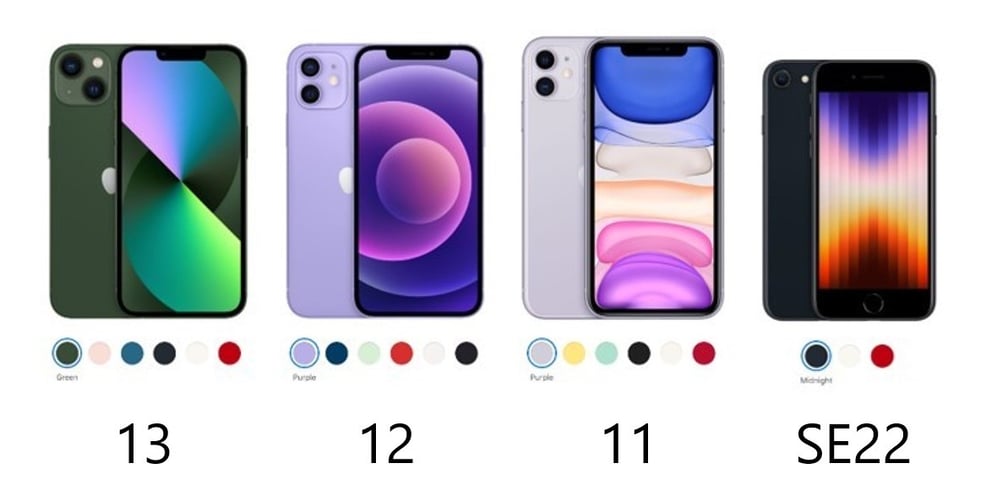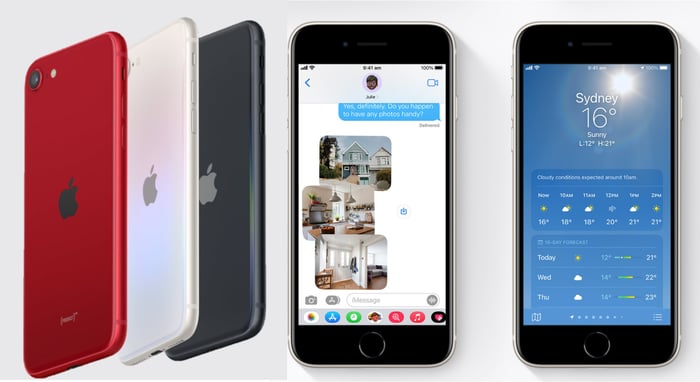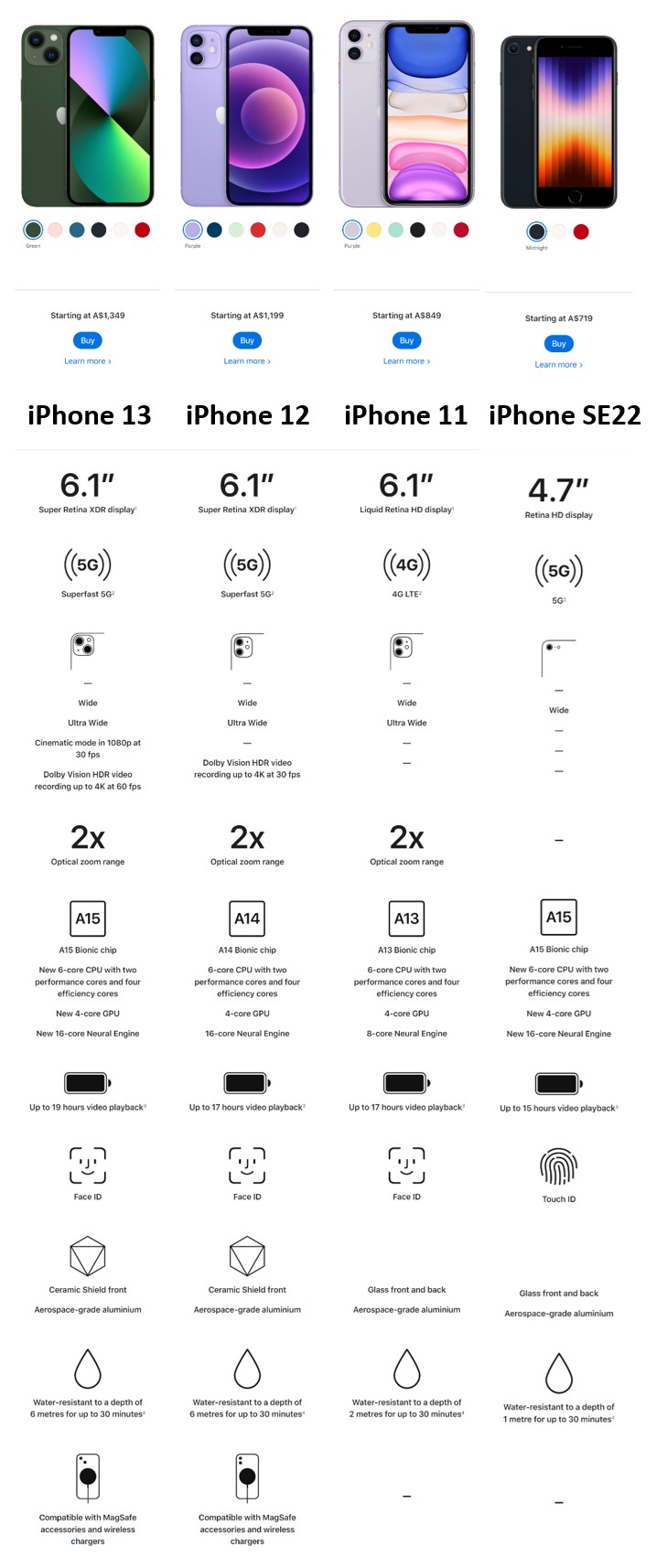In early 2022 a number of Australian businesses stopped buying iPhones. They were waiting for the release of the third generation iPhone SE.
The iPhone SE 2022 went on sale in the Australian market in March 2022 with a starting price of AUD$719. This was 47 percent - or $630 - less than the cheapest version of the iPhone 13.
But is price all that counts? Which iPhone offers the best value and is the best fit for your business users in 2022?
How important is price?
If it's all about the price, the iPhone SE22 wins hands down.
There is a slick $2,000 difference between the cheapest version of the iPhone SE22 and the most expensive iPhone 13 Pro Max.
When comparing the two closest price points, the iPhone SE22 is $130 cheaper than the iPhone 11 at $849.
This is despite the iPhone 11 not being 5G-compatible and being powered by the legacy A13 Bionic chipset, compared to the A15 Bionic chipset in the iPhone SE22.
| Device | Storage | AUD RRP |
| iPhone SE 22 | 64GB | $719 |
| 128GB | $799 | |
| 256GB | $969 | |
| iPhone 11 | 64GB | $849 |
| 128GB | $929 | |
| iPhone 12 Mini | 64GB | $999 |
| 128GB | $1079 | |
| 256GB | $1249 | |
| iPhone 12 | 64GB | $1199 |
| 128GB | $1279 | |
| 256GB | $1449 | |
| iPhone 13 Mini | 128GB | $1199 |
| 256GB | $1369 | |
| 512GB | $1719 | |
| iPhone 13 | 128GB | $1349 |
| 256GB | $1519 | |
| 512GB | $1869 | |
| iPhone 13 Pro | 128GB | $1699 |
| 256GB | $1869 | |
| 512GB | $2219 | |
| 1TB | $2569 | |
| iPhone 13 Pro Max | 128GB | $1849 |
| 256GB | $2019 | |
| 512GB | $2369 | |
| 1TB | $2719 |
How does performance compare?
How important is the shape, screen size, materials, or colour, to business procurement decision-making? For most businesses these features are purely cosmetic. Even the camera, in many cases, is not an essential requirement.
The most important specifications to consider - in tandem with price - are those features which impact performance and longevity, so microchip/iOS, battery life and 5G compatibility.

Microchip - the difference between A15 and A14
The most important feature from a businesses perspective will likely be the microchip.
This is what enhances almost every iPhone operation from loading applications, to delivering faster graphics, allowing 4K video editing, and powering advanced photography features.
The latest Apple chip is the A15 Bionic which is only found in the iPhone 13 series and the iPhone SE22.
Despite being more expensive than the SE22, both the iPhone 11 and 12 models are running on the A13 chip.
A new generation of Apple chip is usually released every 12 months. The A15 was released in September 2021, the A14 came out in September 2020, and the A13 in September 2019. Each generation is an improvement on the last.
The A16 is expected with the release of the iPhone 14 around September this year, but according to renowned Apple analyst, Ming-Chi Kuo, it will only be included in the 14 Pro models with the other iPhone 14 models staying with the A15.
Is Battery life a factor?
Also important for corporate users is the question of battery life. Generally, the higher priced iPhones offer more battery life than the less expensive models.
However, in practice, there is only four hours' difference in battery life across all four of the iPhone models we are comparing, and all will last far beyond the hours of a typical work day. Battery life is not likely to a defining factor in decision-making.
Is 5G a good enough reason?
Do most employees need 5G? Probably not. And even if they have it, many end users may not notice much difference in performance from 4G.
For business, 5G is an enabler at the network and application layers, and the increased speed and low latency will be a driver for new technologies...in time.
The main reason to consider purchasing an iPhone that is 5G-compatible device is as a 'future-proofing' feature.
As the networks continue to rapidly expand, and the 5G use cases become more embedded in our everyday, this will be a useful feature to have moving forward.
The trend is towards corporates sweating their assets and holding onto a device for 3 years or more, therefore it would seem sensible to opt for a 5G-compatible device, provided the pricing is not prohibitive.
Camera performance - hardware and software choices
The camera and video functionality might be important for some roles - obviously those that require work-related content to be captured and shared.
You would think that the quality of the camera performance will be aligned with the price points - the SE22 having the lower spec camera and the iPhone 13 Pro the highest specs.
This is almost the case. The SE22 has only one 12 MP rear camera, however it shares a couple of features that are only available with the A15 Bionic chip which apparently does all kinds of computations behind the scenes to make your photos look great. These include Photographic Styles which customises the tone and warmth values; and Smart HDR 4 which automatically refines the contrast, lighting and skin tones for up to four people.
The 11 and 12 have two rear cameras, introducing ultra wide angle on the second. The 13 also has dual cameras on the rear but these are rearranged in a diagonal to allow space for a larger sensor to enable sensor-based stabilisation.

Biometric Security - coming home to the home button
One of the key differentiators between the SE22 and the other iPhone models is the biometric security feature.
The iPhone SE22 uses Touch ID for its biometric security whereas the other iPhones have the 3D facial recognition system or Face ID.
It’s fair to speculate that the decision to opt for fingerprint recognition is a matter of cost, first and foremost, although Apple like to position it as a response to customer sentiment.
Apple has taken the marketing moral high ground positioning this 'dated' feature as a positive inclusion and the return of “The Home Button you know and love.” The Home Button – a physical button located on the bottom bezel of the iPhone – has always been the home of Touch ID, and was a crucial component of the user experience until its disappearance with the advent of Face ID in 2017.

Design - dated but durable
The design of the iPhone SE22 is unchanged from the iPhone SE20, which, in turn. is essentially the same design as the iPhone 8 which launched in 2017.
This, almost 5-year old design, means a 4.7-inch retina display with the stripes of black top and bottom of the screen to hold the Touch ID fingerprint reader.
A design positive is the glass that is used on the back panel and the display of the phone is the same glass that's used on the back of the iPhone 13 - and Apple claims this the toughest glass used on a smartphone. [To be clear, it's not the same as the Ceramic Shield glass that's used on the iPhone 13 screen.

What is the Verdict?
It is going to be difficult for many businesses to go past the third generation iPhone SE as the 'go-to' device for much of its workforce.
The iPhone SE22 has superior performance over the iPhone 11 and 12 series, and is future-proofed with both the A15 bionic chip and 5G compatibility.
What holds it back for some will be the smaller form factor and screen size. Field and front line workers may value increased screen size when working 'on-the-go'. Similarly C-levels may not appreciate the dated design and lack of biometric Face ID.
The questions business needs to ask is:
"Can we justify the increased cost of the iPhone 11 or 12 when it is inferior in performance to the SE22, in order to gain a larger form factor?"
or
"Can we justify an extra $630+ per device to opt for an iPhone 13 which gives us similar performance to the SE22 but provides a larger form factor?"
It could be tough to find the justification to go past the iPhone SE22.

About MobileCorp
MobileCorp is a Sydney-based communications technology company. We support enterprise and business by providing managed mobility and ICT services including mobile lifecycle management, mobile device security, mobile device management, expense management and 5G 5G network solutions. We are also an Apple Reseller and Authorised Service provider, and a Telstra Platinum Mobility Partner.
iPhone Michelle Lewis 12 Apr 2022
Related Posts
Popular Tags
- Mobility (81)
- Mobile Devices (79)
- Telstra (66)
- 5G (64)
- MobileCorp Managed Services (55)
- Mobile Network (34)
- Networks (34)
- Cradlepoint (32)
- Apple (29)
- MobileCorp (29)
- iPhone (25)
- Remote Working (23)
- Network (17)
- Covid-19 (16)
- Mobile Security (15)
- Wireless WAN (15)
- Cyber Security (14)
- UEM (14)
- MDM (11)
- Mobile Expense Management (10)
- Mobile Device Management (9)
- TEMs (9)
- Mobile Device Lifecycle (8)
- Cloud (7)
- Unified Comms (7)
- Unified Communications (7)
- Wandera (7)
- Android (6)
- Sustainability (6)
- Data Networks (5)
- Network Security (5)
- Samsung (5)
- Security (5)
- Digital Experience (4)
- IOT (4)
- Microsoft Intune (4)
- Blog (3)
- IT Services (3)
- Microsoft (3)
- Data (2)
- Government (2)
- Microsoft 365 & Teams (2)
- Retail (2)
- nbn (2)
- webinar (2)
- 4G (1)
- DAS (1)
- EMM (1)
- Emerging Technologies (1)
- Hosted Telephony (1)
- Managed Desktops (1)
- SD-WAN (1)
- Starlink (1)
- Telstra Services (1)
- WWAN (1)
- video (1)










